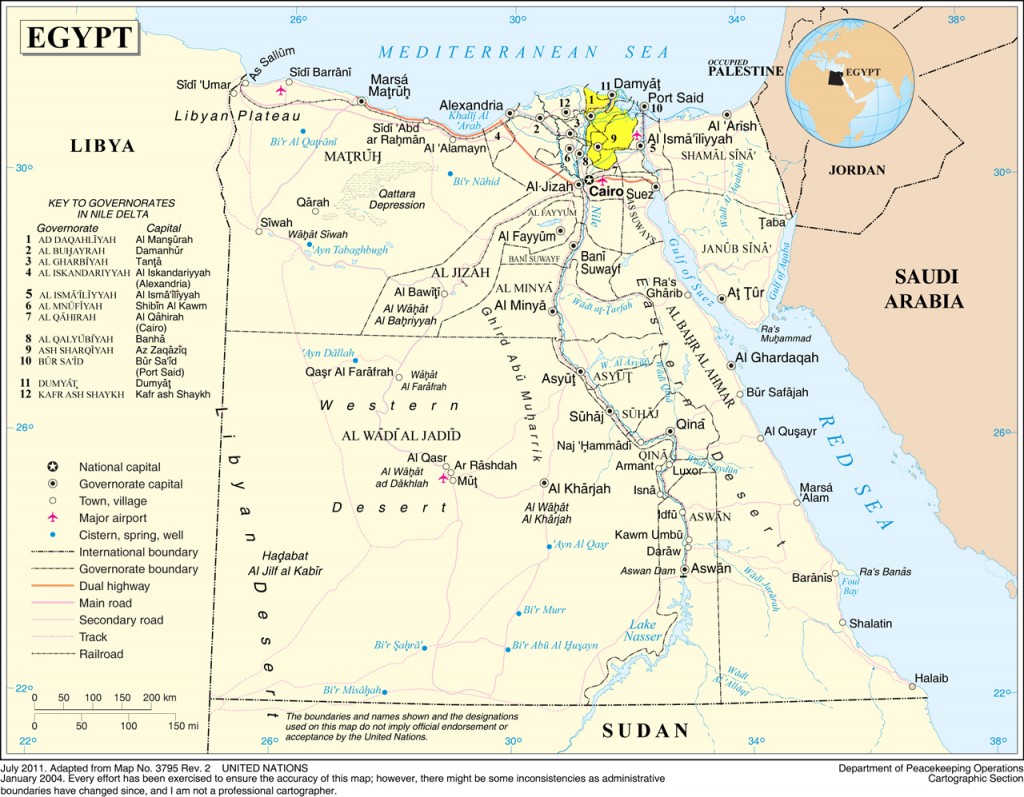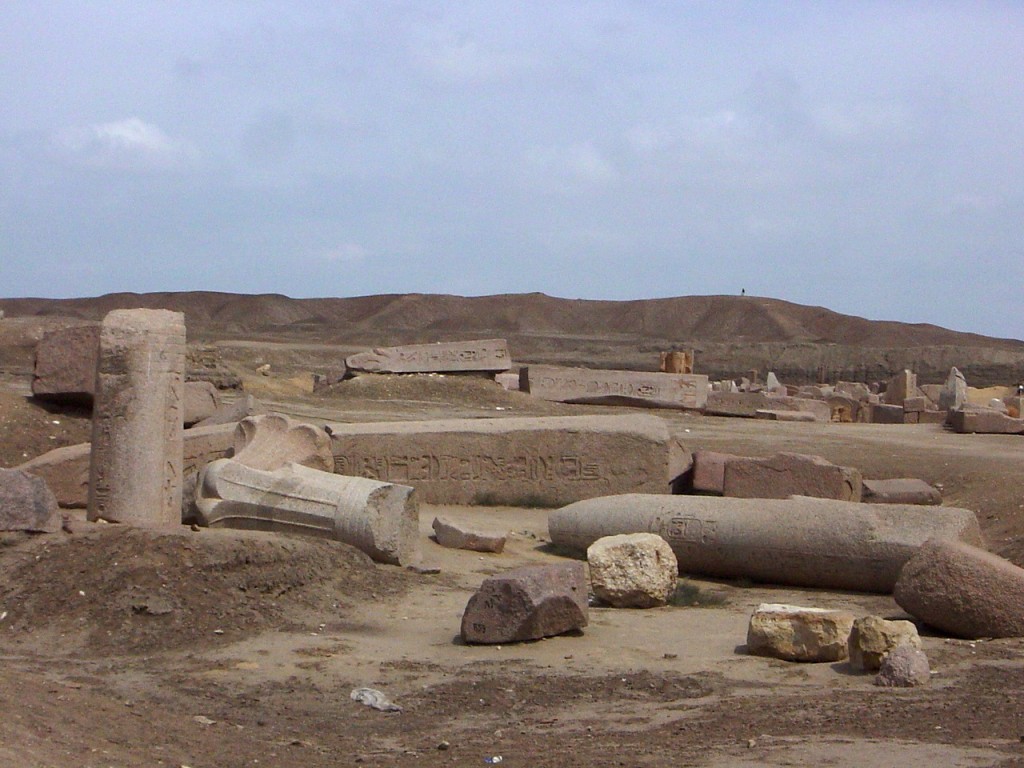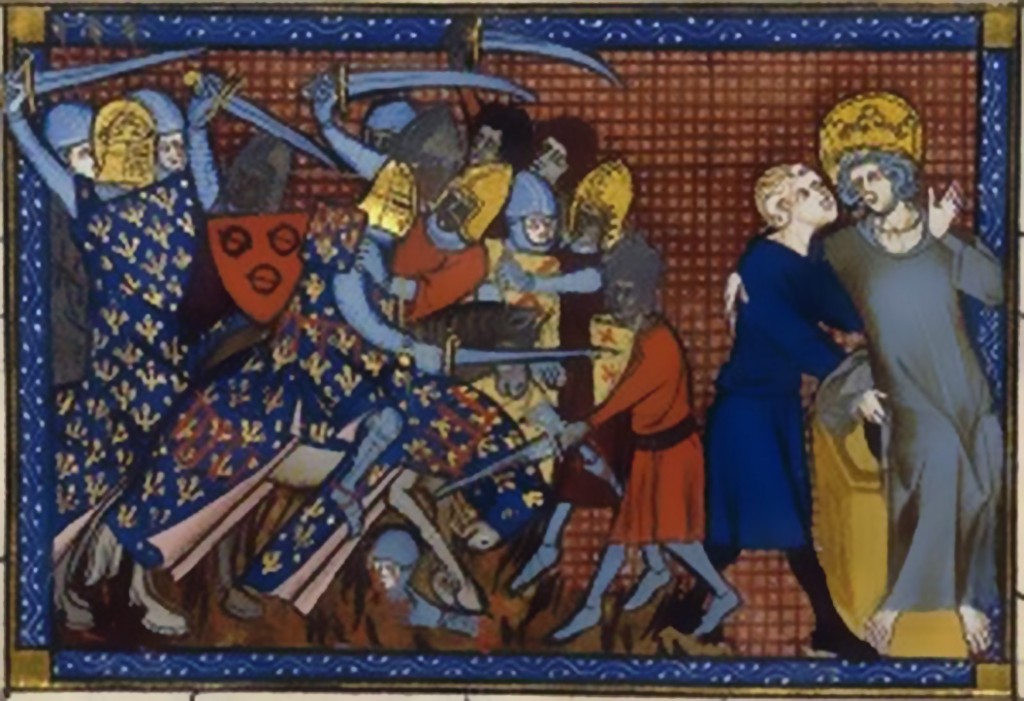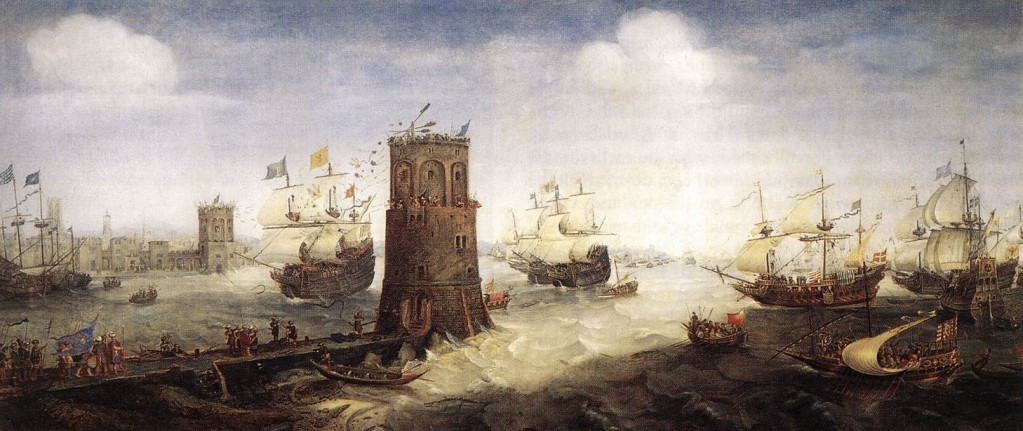One of the most fertile lands on the planet lies between the two branches of the Nile, the Rosetta branch and the Damietta branch. This was where most of Egypt’s food grown, and where the world famous Egyptian cotton thrived.
There used to be seven distributaries for the Nile: (from east to west) the Pelusiac, the Tanitic, the Mendesian, the Phatnitic (or Phatmetic), the Sebennytic, the Bolbitine, and the Canopic (also called the Herakleotic). There are now only two main branches, due to flood control, silting and changing relief: The Damietta (corresponding to the Phatnitic) to the east and the Rosetta (corresponding to the Bolbitine) on the western part of the delta.
This part of the guide deals with the Eastern part of the Delta. The Eastern Delta has much more to offer than its western sibling, it has the best pharaonic ruins that Lower Egypt has to offer, a number of beach resorts, and some nice bird watching and hunting.
Ash-Sharqiyah (The Eastern)
One of Egypt’s governorates, the original eastern gate to Egypt in ancient times used to be the 12th Nome of Egypt with the capital Bubastis. It has a population of 5,800,000 as of the last 2008 census, and it is the second most cultivated governorate after Al-Buhayra, with almost 825000 acres farmed.
Ash-Sharqiyah has several claims to fame, first of which are the ruins of Bubastis, Tanis, and Avaris. Bubastis, or Tall Basta as it is known now, or Egyptian Per-Bast was an Ancient Egyptian city, the capital of its own Nome. Bubastis is often identified with Phibeseth (“house of Bastet”) of the Bible. It was a glorious city according to Herodotus when he described the city in 525 BCE.
Tanis and Avaris are different story. Tanis (San-El-Hajar) was founded in the late 20th dynasty, and became the northern capital of Egypt during the following 21st dynasty. It was the home city of Smendes, founder of the 21st dynasty. During the Twenty-second dynasty Tanis remained as Egypt’s political capital (though there were sometimes rival dynasties located elsewhere in Upper Egypt). It was an important commercial and strategic city until it was threatened with inundation by Lake Manzalah in the 6th century CE, when it was finally abandoned. In the film Raiders of the Lost Ark, Tanis was said to be the resting place of the Ark of the Covenant which was hidden in a secret chamber. Tanis was inaccurately depicted as having been destroyed in a sand storm and buried until 1936 when it was discovered by a German expedition outside of Cairo. However, it was actually discovered in 1937 by the Nazis but there is no evidence to say that the arc was recovered at this site. The arc remains undiscovered.
Avaris was located near modern Tall Al-Dab’a (Mound of the Hyena); its position at the hub of Egypt’s delta emporia made it a major administrative capital of the Hyksos (the Shepherd Kings) and other traders. From c 1783-1550 BCE or from the Thirteenth Dynasty of Egypt through the second intermediate until its destruction by Ahmose, the first Pharaoh of the Egyptian Eighteenth dynasty, Avaris brought a little bit of Canaan home to Egypt.
We shall try to shed more light on Avaris in a later post insha’Allah.
Ass-Sahrqiyah is also world famous for breeding pure Arabian Horses, the governorate breeds more than 80% of the horses in Egypt and it organizes an annual world fare with several countries participate along with the World Arabian Horse Organization.
Ad-Daqahliyah
To the northeast of Cairo lays Ad-Daqahliyah with a population of about 5 million. The capital of Dakahliyah is Al-Mansurah (The Victorious).
Al-Mansurah was were the 7th Crusade (8 February – 11 February 1250) led by Louis IX of France came to a grinding and humiliating halt, with an estimated 15,000 to 30,000 crusaders dead, and thousands others captured. Louis IX himself was captured, chained and confined in the house of Ibrahim Ibn Loqman, the royal chancellor, along with his brothers and some other nobles. He was later ransomed for the release of Dumyat and 400,000 Dinars. Apparently the city is also famous for its delicious buffalo-milk ice cream according to the Rough Guide to Egypt.
Ad-Daqahliyah is famous for producing some of the most acclaimed Egyptians in the fields of science, engineering, medicine and the arts. The Urology and Nephrology Centre of Al-Mansurah University Faculty of Medicine is considered the best kidney centre in Africa.
The governorate also has one of Egypt’s oldest Mediterranean resorts at Gamasa, mostly closed up off season (in the winter) but lively enough during the summer months.
Lake Mazalah, the largest of the delta lakes, is a great place for bird watching. Winter is best time to see herons, spoonbills, pelicans, and flamingos according to the Rough Guide to Egypt.
Dumyat (Damietta)
Situated near the mouth of the eastern branch of the Nile, this governorate of 1,092,316 (2006) was very prosperous during the middle ages, and due to its strategic location became a coveted target for the crusaders, who seized it once during their alliance with the Fatimids against Shikuh and Salah Al-Din. The Siege of Damietta of 1218 was part of the Fifth Crusade. The city, under the control of the Ayyubid Al-Kamil, was besieged by and taken by the Crusaders in 1219; however, after being reinforced to 35,000 men, they were heavily outnumbered by a 70,000 Muslim strong army. During the Seventh Crusade led by Louis IX of France in 1249 Dumyat was yet again captured. The main function of the crusaders was pillaging, and Dumyat suffered heavily during the occupations.
Damietta is famous of its skilled carpenters and furniture; these productions are not sold only inside Egypt and Arab countries, but also in Europe and the USA. These productions are made in small to large workshops that have very skilled carpenters.
Dumyat is also home to the resort Ras Al-Bar (Head of Land). The uniqueness of Ras Al-Bar as one of the world’s rare points where a river meets the sea has offered it a great advantage which is having shores that overlook both the Nile and sea. It’s even said that Ras Al-Bar existence is a result of that unique meeting as both the sea and the Nile left sand and alluvium.












